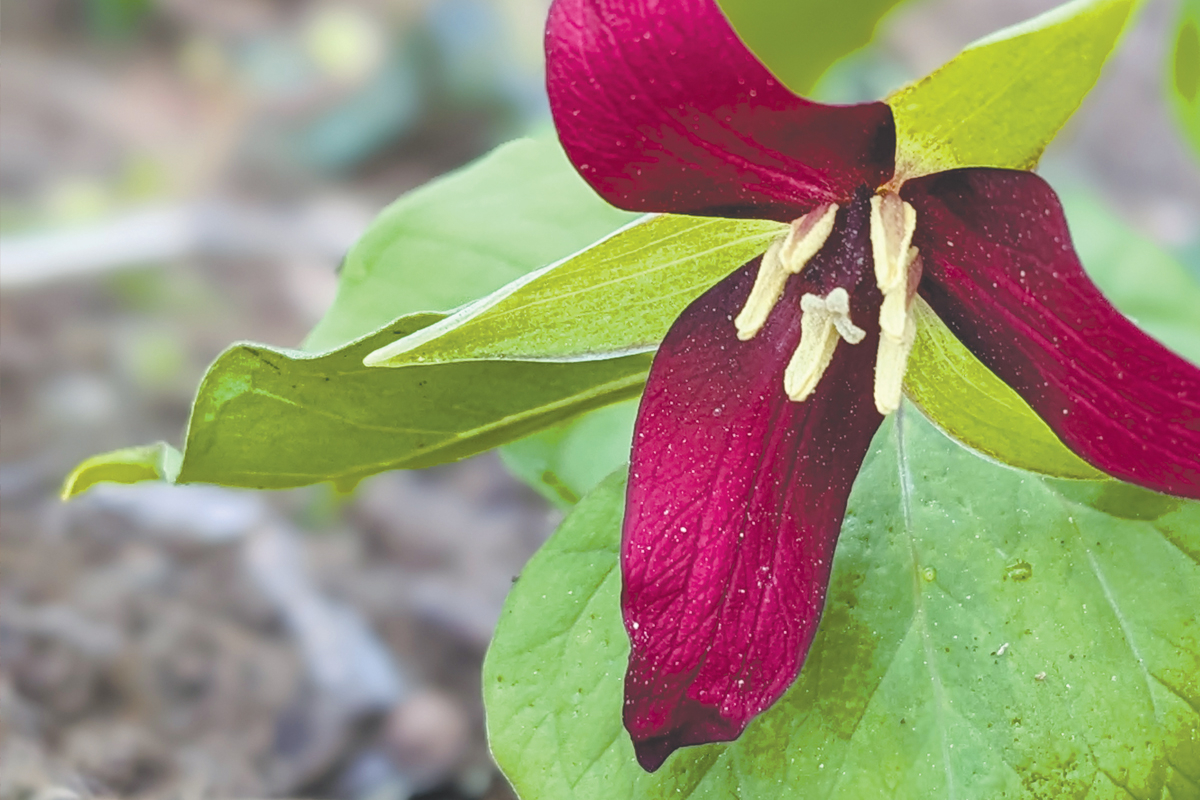Notes from a plant nerd: Trilliums, Trilliums, Trilliums
 A red trillium (Trillium erectum) blooms alongside the Appalachian Trail.
A red trillium (Trillium erectum) blooms alongside the Appalachian Trail.
Trilliums are some of the most beautiful and iconic wildflowers in the world, and the Southern Appalachian mountains are filled with many different trillium species.
Wake-robins, toadshades, bashful trilliums, large white trilliums, painted trilliums, and so many more. There are trilliums with white flowers, red flowers, maroon, yellow and pink flowers. Even some trilliums with variegated patterns on their petals, or variegation or mottling on their leaves.
There are at least 13 species of trillium in North Carolina, 14 in South Carolina, 16 in Alabama, 18 in Tennessee and 20 in Georgia. Most of those species grow in the mountainous areas of those states, so were we to consider the entire bioregion of Southern Appalachia, we would be the trillium capital of the world (which we are).
Most everything about trilliums comes in threes. Three leaves, three petals and three sepals. Sepals are modified leaves that form the outer covering of flower buds that then open and hold the flowers from below. Trilliums even have three stigmas, which of course are one of the parts of the flower. You remember the names for all the flower parts, I’m sure. Especially as you were taught them in elementary school.
Flower structures are divided into two parts, the female and male parts of the flower. The female flower parts, where seeds are developed, are called the pistil, which are comprised of the stigma, style and ovary. The male parts are called stamens, and are comprised of the anther, which produces pollen, on a stalk called a filament.
There are three general types of trilliums, continuing the triplet theme of this plant. There are trilliums whose flowers arise right on top of the leaves and have no flower stalk. These are called sessile, which means without a stalk. The term can be applied to flowers or leaves in describing parts of plants.
Related Items
The sessile trilliums that grow around us include little sweet betsy (Trillium cuneatum) with maroon flowers that smell sweet, and the yellow trillium (Trillium luteum) which have yellow flowers and smell like lemon custard. Both trilliums have mottled leaves and are closely related enough that they can hybridize when growing in the same area. These hybrids produce a brown flower with a sweet scent.
The other categories of trilliums are those whose flowers are born on a stalk, or pedicel. These stalked trilliums can hold the flower above the leaves, like the wake-robin (Trillium erectum) and large white trillium (Trillium grandiflorum). And then there are the nodding trilliums, whose stalked flowers hang below the leaves, often seeming to hide from view.
Examples of nodding trilliums in our area include Vasey’s trillium (Trillium vaseyi), southern nodding trillium (Trillium rugelii) and Catesby’s trillium (Trillium catesbei). These trilliums are named for historic botanists George Vasey, Ferdinand Rugel and Mark Catesby, respectively.
However, I prefer to call Trillium catesbei by one of its other common names, the bashful trillium, since the flower is hiding below the leaves and blushes pink when you flip up the leaves to look at it.
Trillium seeds have developed an interesting way to spread themselves around. The seeds of trilliums have a fleshy, protein-rich attachment on their seeds called an elaiosome that is a delicacy to ants.
Ants take the seeds back to their homes, where they eat the elaiosome. But native ants do not eat the the trillium seeds. Rather, once the elaiosome is off, the seed is taken to the waste pile in each ant mound, effectively planted by the ants. This method of seed dispersal by ants is known as myrmecochory.
So, if you see a cluster of trilliums growing in the woods close together, often with their flowers facing different directions, they were probably planted by ants, or even by yellowjacket wasps, which have also been found to enjoy elaiosomes and plant the seeds. Who knew ants and wasps were such prolific gardeners?
(Adam Bigelow lives in Cullowhee in Jackson County and leads weekly wildflower walks most Fridays and offers consultations and private group tours through Bigelow’s BotanicalExcursions. This email address is being protected from spambots. You need JavaScript enabled to view it..)





